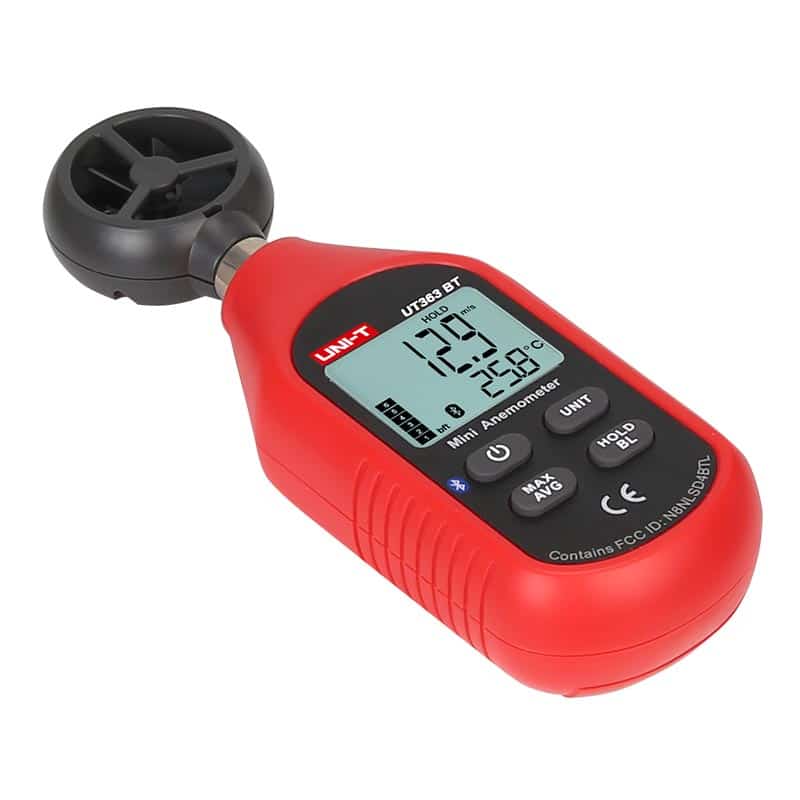Picking the Right Anemometer: A Comprehensive Acquiring Overview
Picking the Right Anemometer: A Comprehensive Acquiring Overview
Blog Article
Anemometers Introduced: Understanding Their Significance in Ecological Tracking and Precaution
The duty of anemometers in ecological monitoring and safety and security steps is often undervalued, yet their relevance is obvious. From weather forecasting to aeronautics safety, anemometers play a crucial duty in giving accurate information that informs decision-making processes and improves overall security.
Background of Anemometers
The development of anemometers can be mapped back to the ancient civilizations where rudimentary wind determining devices were initial utilized. These very early wind dimension tools laid the structure for the advancement of much more advanced anemometers over time. One of the earliest known anemometers was the hemispherical cup anemometer created by Leon Battista Alberti in the 15th century. This layout contained 4 hemispherical cups that accumulated wind energy, supplying a measurement of its strength based upon the speed of rotation.
In the 18th century, the distinguished researcher John Thomas Romney Robinson presented the Robinson anemometer, which included four hemispherical cups mounted on horizontal arms that prolonged from a central axis. This design ended up being a requirement in atmospheric dimensions due to its accuracy and dependability. For many years, advancements in technology caused the growth of even more modern-day anemometers, consisting of ultrasonic anemometers and laser Doppler anemometers, supplying increased accuracy and performance in measuring wind rate and direction. The background of anemometers showcases an exceptional trip of technology and progression in the area of meteorology.
Sorts Of Anemometers
Throughout the area of meteorology, different kinds of anemometers have been created to precisely measure wind rate and direction. One of the most usual type is the cup anemometer, which contains three or 4 mugs installed on horizontal arms that turn with the wind. As the cups spin, the rate at which they rotate is straight symmetrical to the wind speed. One more commonly utilized type is the vane anemometer, which features a tail or fin that aligns itself with the wind instructions. This positioning allows the gadget to establish the wind instructions. Sonic anemometers use ultrasonic signals to gauge wind speed and instructions precisely. They are typically made use of in research study applications due to their high accuracy. Hot-wire anemometers run based on the concept that the cooling effect of wind on a warmed wire is symmetrical to the wind speed. These anemometers appropriate for determining reduced wind speeds with high accuracy. Each kind of anemometer has its staminas and is selected based upon the particular requirements of the surveillance job available.
Applications in Weather Forecasting
Having discussed the various types of anemometers used in weather forecasting for determining wind speed and direction, it is vital to explore their practical applications in the field. Anemometers play an essential function in weather forecasting by supplying exact and real-time information on wind problems (anemometer). Meteorologists make use of anemometers to check wind rate and instructions to anticipate weather patterns, concern warnings for severe weather events like storms, tornadoes, and hurricanes, and assess atmospheric problems for aeronautics security
In weather forecasting, anemometers aid in understanding local and regional wind patterns, which are important for anticipating weather adjustments and establishing weather trends. These devices are also made use of in research study to study microclimates, urban warmth islands, and air pollution dispersion. In addition, anemometers are utilized in agriculture to maximize crop monitoring methods, such as irrigation and chemical application, based on wind conditions.
Importance in Aeronautics Security
An important aspect of making certain aeronautics security lies in the careful monitoring of wind problems making use of anemometers. Anemometers play a crucial duty in air travel by giving real-time data on wind speed and instructions, aiding pilots in making notified choices during landing, liftoff, and flight. Strong and uncertain winds can significantly affect airplane operations, making it essential for aviation authorities to rely upon accurate wind dimensions to guarantee the safety and security of passengers and team.

In the dynamic environment of air travel, where even small changes in wind speed and instructions can have extensive effects, anemometers stand as indispensable tools for advertising safe and secure and safe flight.
Duty in Environmental Research
Anemometers play a crucial role in ecological study by offering necessary information on wind rate and instructions. By accurately measuring wind qualities, anemometers help researchers analyze the motion of toxins in the air, see post analyze the influence of commercial discharges, and anticipate the spread of contaminants in the atmosphere.


Verdict
In verdict, anemometers have played a vital role in ecological monitoring and safety actions. Comprehending the significance of anemometers is crucial for precisely measuring wind speed and direction, which is vital for forecasting weather patterns, making certain risk-free air travel procedures, and carrying out ecological research studies.
One of the earliest well-known anemometers was the hemispherical cup anemometer designed by Leon Battista Alberti in the 15th century. Over the years, innovations in technology led to the growth of more modern anemometers, including ultrasonic anemometers and laser Doppler anemometers, offering increased accuracy and efficiency in gauging wind speed and direction. Hot-wire anemometers operate based on the concept that the cooling effect of wind on a heated cord is proportional to the wind rate. Meteorologists make article use of anemometers to keep an eye on wind rate and direction to forecast weather patterns, concern warnings for severe weather condition occasions like hurricanes, hurricanes, and tornados, and evaluate atmospheric conditions for aeronautics safety and security.
Comprehending the value of anemometers is vital for accurately determining wind speed and instructions, which is essential for anticipating weather patterns, guaranteeing risk-free air travel operations, and conducting environmental studies. (anemometer)
Report this page